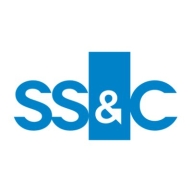

SS&C Blue Prism and Temporal are competitors in the automation space. Temporal has an advantage in adaptability and robustness, making it preferable for developers, while SS&C Blue Prism is favored for its enterprise-grade automation and integration capabilities.
Features: SS&C Blue Prism provides robust integration options and process automation, making it ideal for large enterprises. It offers strong enterprise automation capabilities. Temporal offers high scalability and fault-tolerant workflows, suitable for dynamic environments. Temporal's flexibility is advantageous for developers, providing features that cater to varied development needs.
Ease of Deployment and Customer Service: SS&C Blue Prism provides traditional on-premise deployment, suited for stable environments with extensive support. Temporal uses cloud-based deployment, offering quick setup and flexibility, improving operational simplicity and support responsiveness. Temporal stands out in deployment scalability and customer interactions.
Pricing and ROI: SS&C Blue Prism requires higher initial investment due to infrastructure demands with promises of long-term stability. Temporal offers an accessible pricing model with quicker returns on investment through its cloud-based approach. Temporal's flexible pricing structure potentially results in higher ROI, appealing to businesses seeking low upfront costs.


SS&C Blue Prism provides scalable, intelligent automation for dynamic business environments. Its technology enhances process efficiency and delivers significant operational benefits. Users leverage its capabilities in task automation and broader digital transformation strategies.
SS&C Blue Prism incorporates advanced robotic process automation aimed at optimizing workflows and enabling end-to-end automation. It allows businesses to automate repetitive tasks, integrate systems, and improve process accuracy. With a focus on enterprise-grade security and compliance, it helps organizations achieve digital transformation milestones while maintaining robust control frameworks.
What are the critical features of SS&C Blue Prism?SS&C Blue Prism finds implementation across industries like finance, healthcare, and retail, where automation is harnessed to optimize high-volume transactional tasks. In finance, it automates reconciliation processes, while in healthcare, it aids in patient data management, showcasing its versatility.
Temporal automates and manages workflows efficiently, offering resilience in distributed systems with features like retry and fault tolerance. Its capabilities in handling complex workflows and integrating with programming languages make it a valuable tool for managing diverse business logic.
Temporal excels in workflow orchestration, automating tasks across multiple platforms, and ensuring durability in asynchronous operations. It supports long-running workflows and simplifies handling distributed transactions, reducing boilerplate code. Temporal is noted for its durable execution and built-in retry policies, enhancing resilience. Despite its complexity and steep learning curve, it is valued for its integration with popular programming languages and relatively easy setup process, though it requires improvements in user-friendly features, documentation, community support, and security.
What are Temporal's key features?Temporal is implemented in sectors requiring robust workflow orchestration, such as managing data pipelines, API integration, and scheduling tasks. Organizations in a Kubernetes environment leverage it for its scalability and infrastructure management capabilities, securing integrations and enhancing reliability across IT operations.
We monitor all Process Automation reviews to prevent fraudulent reviews and keep review quality high. We do not post reviews by company employees or direct competitors. We validate each review for authenticity via cross-reference with LinkedIn, and personal follow-up with the reviewer when necessary.